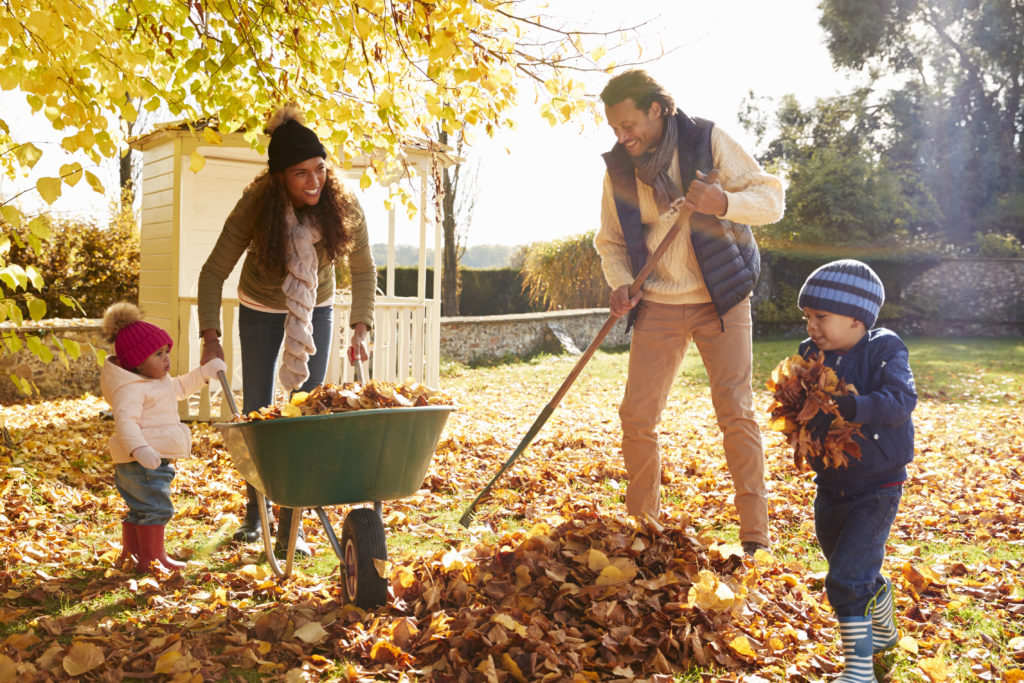
Fall is the best time to take care of big home repair projects before shorter days and colder weather make outdoor work difficult or even impossible. If you live in an area with severe winter temperatures, now is the time to increase energy efficiency in your home and prevent winter storm damage with proper tree care. Take care of vital issues now and you can rest easy knowing that your home and property are both ready for winter. Here’s a list of fall home maintenance tasks that can help your home remain safe as the seasons change.
- Working from the outside in, start with the trees in your yard. Trimming dead branches helps prevent any dead limbs from breaking beneath the weight of winter ice and snow and potentially damaging your roof or injuring someone. Trees go dormant during fall and winter, and professional arborists recommend fungicide injections in the fall to prevent diseases from developing. Early change in leaf color, dead branches, and pine needles turning brown are all signs of burgeoning diseases.
- While you’re outside, don’t forget to rake up excess leaves. More than just a task that helps your yard look neater, too many leaves left on a lawn over winter can inhibit spring growth. Don’t forget to clear the leaves out of gutters and downspouts at the same time. Clogged gutters can cause water to pool and later, ice to form that could damage your roof or siding.
- Seal up any openings that might allow the outside in. Insects, mice, and other small animals might decide to seek warmth from the cold in the walls of your home if they can get inside.
- Protect your water pipes from freezing by shutting off all exterior faucets, draining and packing up garden hoses before winter temperatures dip below freezing. Store hoses indoors to preserve them for use again next spring.
- During cold winter nights, furnaces work hard to keep our homes warm. It’s important to regularly test smoke detectors and carbon monoxide detectors and replace batteries as needed. Fire extinguishers should also be checked annually and replaced if the expiration date has been exceeded. As the weather gets cooler and windows stay shut more often, deadly radon gas is more likely to become trapped in your home. If you find that your home has a radon level of 4 or above, hire a qualified professional to fix the problem.
- Cover or remove any window air conditioning units. Although it is best to remove them completely, if you decide to leave them in place, using an insulated wrap to cover the entire exterior of the unit will help keep cold air out.
- Conducting an energy audit can help discover your home’s current energy efficiency. A trained auditor can provide you with a list of recommended improvements to make to increase energy savings. This could include adding insulation to your attic, upgrading to Energy Star appliances, replacing or beefing up weather stripping.
- If you have a fireplace, have it inspected before use. Schedule a professional chimney cleaning and before using your fireplace for the first time. If you don’t already have one, be sure to add a chimney cap to stop birds and other animals from crawling or falling down your chimney.
- Have your furnace serviced. Just as with your fireplace, it’s important to have your furnace inspected annually before every winter. Proper maintenance and cleaning can help your home heating system run efficiently and give you many more years of good service than a system that is not regularly maintained.
- Clean lint buildup from dryer vents. Lint can make your dryer work less efficiently and even cause a fire, just as dirt and debris on your furnace can do the same. During cool, dry fall weather static electricity increases, which can ignite a fire in a dryer with lint buildup.
Following this easy fall maintenance checklist can help you enjoy the change of seasons in comfort and safety, knowing your home is properly prepared.





